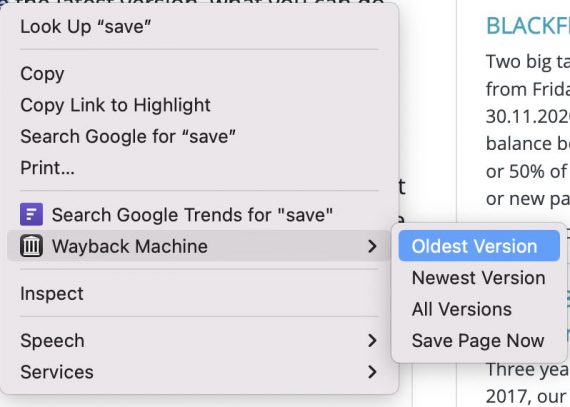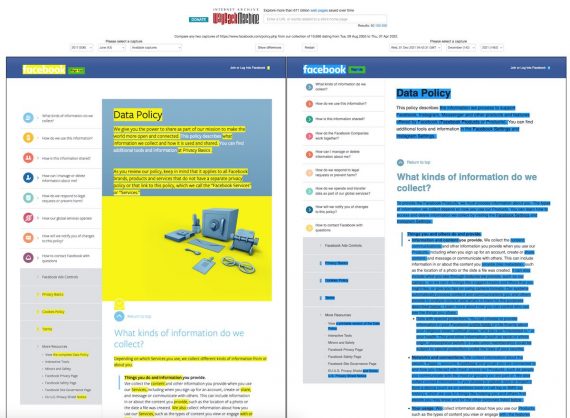Search engine optimization tools come and go. But two have been around for decades and remain essential and free: Wayback Machine and Google cache.
Both take recurring snapshots of billions of web pages and allow anyone to view the images.
Those images are handy for general research, but they are invaluable for SEO, helping understand a page’s history and what may have caused its boost or decline in rankings.
Both tools, incidentally, allow website owners to prevent the archiving of their pages via meta tags: noarchive (for Wayback Machine) and nocache (for Google cache). Not many sites use those tags, but if you cannot locate a page in either archive, that may be why.
What follows are three ways Wayback Machine and Google cache can help your SEO.
Wayback Machine, Google Cache
Identify changes on the page. In 2019, Wayback Machine launched a helpful feature: the ability to compare two versions of the same page.
It’s useful for many SEO tasks, such as diagnosing a traffic decline in your own site and analyzing a competitor’s increase to reverse engineer.
To access and compare pages:
- Insert the page’s URL in Wayback Machine.
- Click the “Changes” button below the search field.
- Select two dates in the calendars beneath and click “Compare.”
Selecting a date (such as before a competitor’s rankings boost) is not typically obvious. Google’s algorithm is often slow to react to pages changes. A rankings increase in April, for example, may result from a page change in January. Thus you may need to repeat the exercise a few times to find the changes.
The snapshots below illustrate a Facebook privacy page change. The yellow on the left highlights deleted content. The blue on the right shows new content.
To be sure, on-page changes are not the only reason for an organic rankings change. But it is an important factor. When comparing the two pages:
- Look for keyword changes — new and existing — and their prominence.
- Analyze changes to the main navigation.
- Study new sections and elements.
Determine a page’s age. Whether a page is old or new could answer ranking questions, such as:
- How did the page generate such a huge backlink profile?
- How often did the page change, and when?
- How consistent are the page’s rankings over time? A newer page that quickly climbed in organic results will not likely remain there.
Using Wayback Machine, we can tell the approximate age but not the exact launch date. The official Wayback Machine extension for Google Chrome provides easy access to the oldest archived version of any page. Right-click anywhere on the page and choose “Oldest version.”

Wayback Machine’s extension for Google Chrome provides easy access to the oldest archived version of a page.
Alternative archiving sites include Oldweb.Today and the U.S. Library of Congress Web Archive. Check those sources if your page is unavailable on Wayback Machine.
Confirm that Google can access an entire page. Google’s cache informs whether it can crawl all the links and text on a page. To access:
- Type cache: in Google’s search box and insert your URL after the colon with no space.
- Click “Text-only version.”
Look for:
- Links that appear as plain text or do not show up at all. Very often, “Related posts” plugins display links as JavaScript.
- Missing text. Mobile versions of a site sometimes exclude essential text.
This process also discloses if Google is storing your desktop or mobile version in its cache — a good indicator of Google’s evaluation of the page.
A Chrome extension called “Web Archives” provides quick access to Google’s cache of any web page as well as Bing’s cache and Wayback Machine.
Keep Your Own Archive
Finally, consider storing an archive of your strongest competitors’ landing pages and, more importantly, receiving notifications when they change. Use Visualping, which is free for up to five daily checks. It, too, will help identify which on-page changes impacted rankings and whether those pages are archived in Google cache and Wayback Machine.





